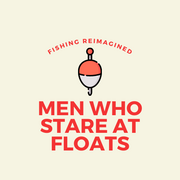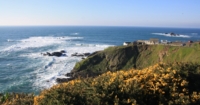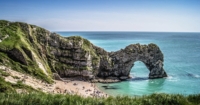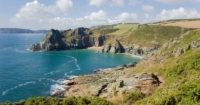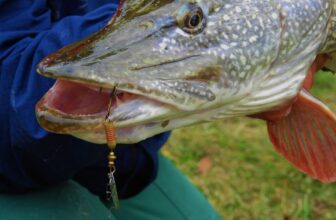Lure fishing for bass in the UK is – in our opinion – the best angling you can do on these shores. Because bass are such aggressive hunters, chasing them with lures gets the heart racing like nothing else (on UK shores at least).
And it’s such an exciting, easy and efficient way to fish. If things aren’t working and the fish aren’t biting, clip on a new lure or try a different style of retrieve. Let it sink, retrieve it faster, twitch it back in or try a surface lure. You have more control than when you’re float fishing for bass.
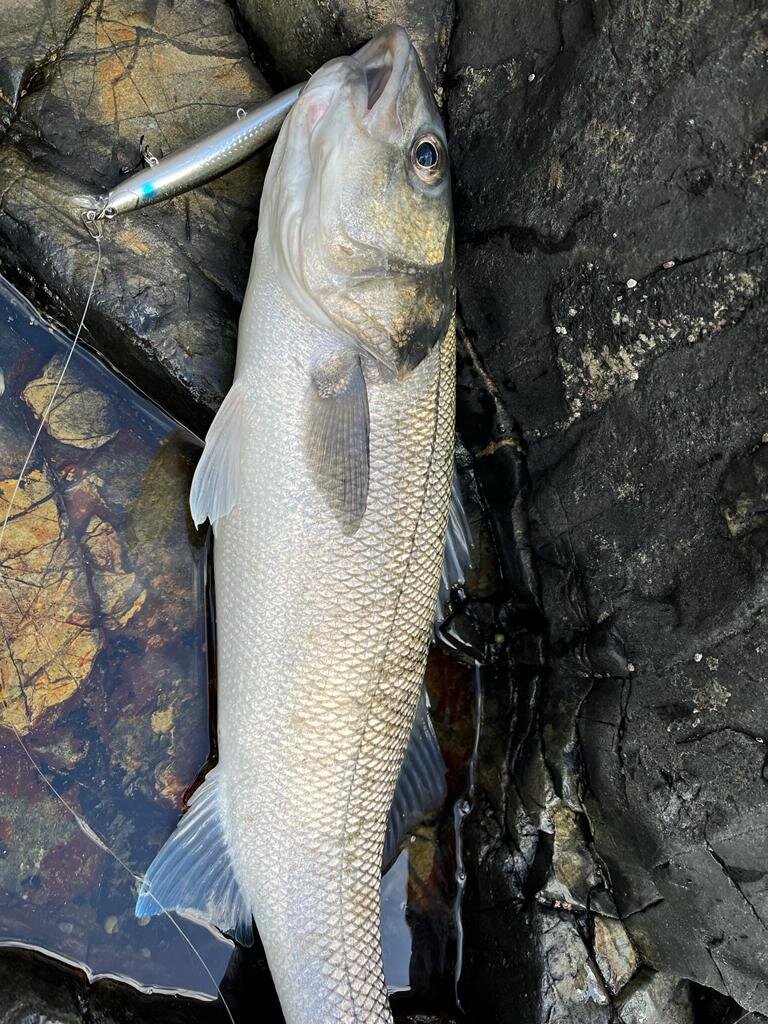
You cover a huge amount of ground in extraordinary locations. The coastlines bass are predominantly found in are stunningly beautiful. The Jurassic Coast, Cornwall, Southwest Ireland and Norfolk are exceptional places to spend time. You can see the rest of our favourite bass fishing locations here.
The 11 Best Spots to Sea Fish in Cornwall
What’s on this page?
How do you lure fish for bass in the UK?
In order to lure fish for bass in the UK, there are a few key things you need to tick off:
A location
A specific coastline in the UK that you’re going to fish for bass.
A mark
A specific area of the coastline that you have studied and decided looks bassy. Rough ground, gullies, prevalence of baitfish etc.
Lure fishing tackle
An excellent bass rod – find our favourites here, saltwater-specific lure fishing reel, lure fishing setup – bass-specific lures, line, leader material – and an ability to tie it all together. And that’s it. In essence, you’re ready to go.
For a more general look at saltwater lure fishing in the UK, this post should provide some really useful information.
What are the Best Conditions for Bass Fishing in the UK?
Where can I lure fish for bass in the UK and Ireland?
Bass prefer warmer waters – hence why the summer months are more prevalent – and the best marks tend to be found around the south coast of England and Ireland.
- Devon’s Jurassic Coast
- Cornwall
- Sussex Coastline
- Dorset
- Southwest Ireland
- East Anglia
- Pembrokeshire
The 9 Best Sea Fishing Spots in Dorset
There’s still some very fine lure fishing to be found further north too – primarily in the early autumn months when the sea temperature has risen slightly. This is when the fish are at their most aggressive. If the water is too cold, you’ll find lure fishing tougher as fish tend to conserve their energy. They’re also more likely to be in the shallower water. You can read more on this in our guide to bass fishing.
Whitby, Berwick-upon-Tweed, Amble in Northumberland and Whitley Bay are all popular marks for bass fishing in the north of England.
This study on the impact water temperature had on predatory fish suggests that warming sea temperatures is going to influence top-down control of oceanic communities. Essentially warmer waters encourage predatory consumption of marine biomass.
And how do I find good marks to lure fish for bass?
You need to use Google Maps to find good marks to lure fish for bass. And it’s surprisingly easy. You just need to understand a few things about bass and lure fishing, most notably:
- That bass primarily hunt in low light, rougher conditions as the tide floods and ebbs
- Structure and changes in water depth are a predator’s friend
- Bass tend to hunt in shallower water
- You need a mark that you can reach by foot (if you’re fishing from the shore)
So when you have a location in mind (I’m talking a vague location like a town or even a coastline), load up Google Maps and follow the below steps. This is one of our top tips for bass fishing.
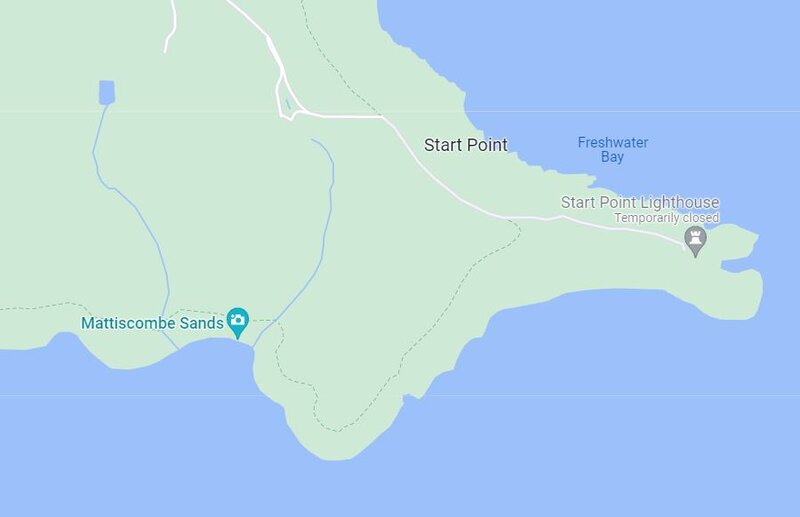
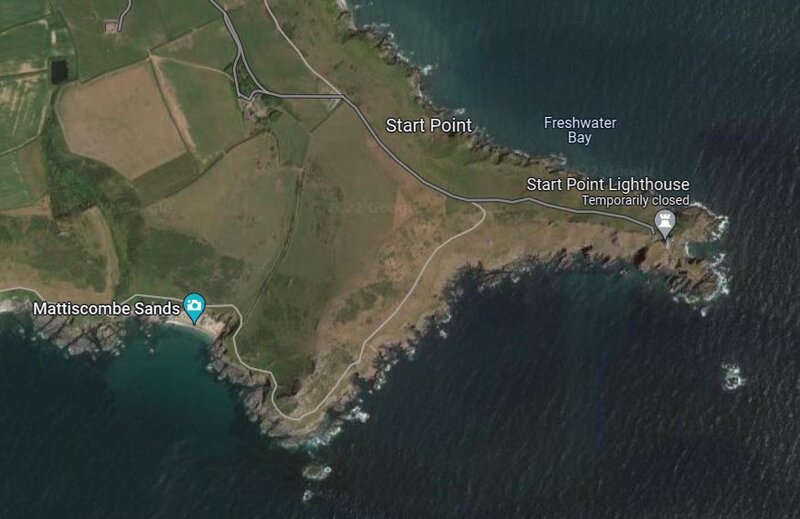
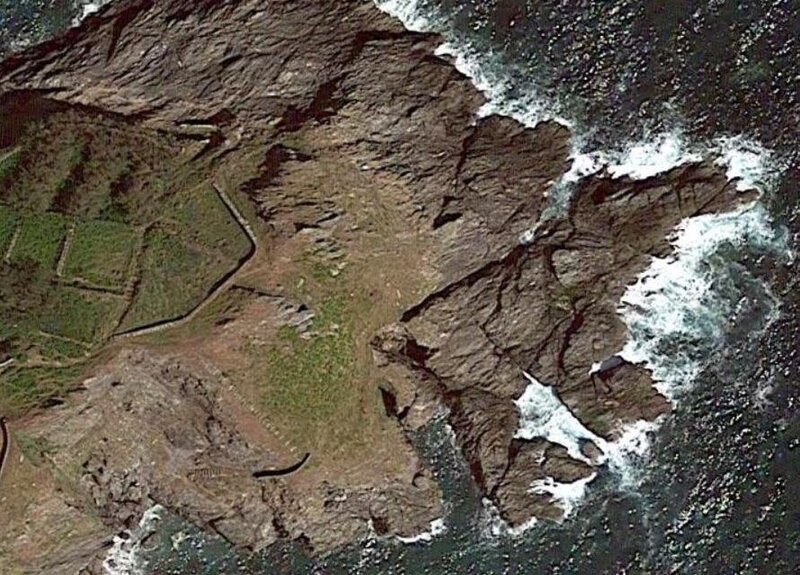
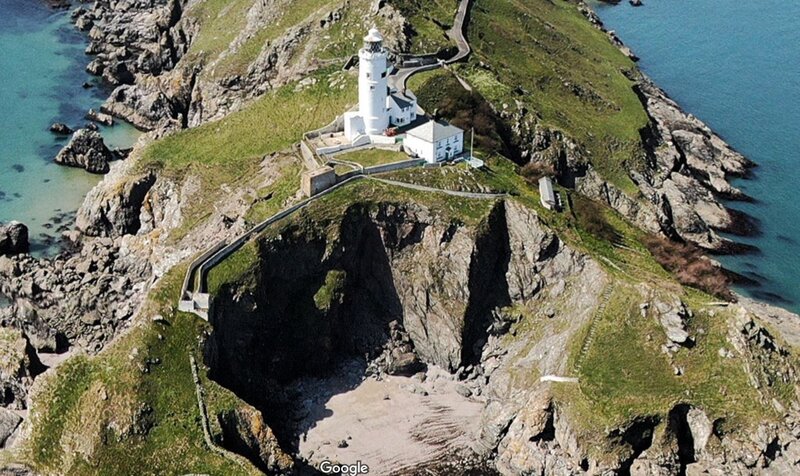
What tackle do I need to start lure fishing for bass?
To start lure fishing for bass you need:
- A rod and reel
- Braided line
- A leader
- Lures
- An unhooking tool
- Scissors / a line cutter

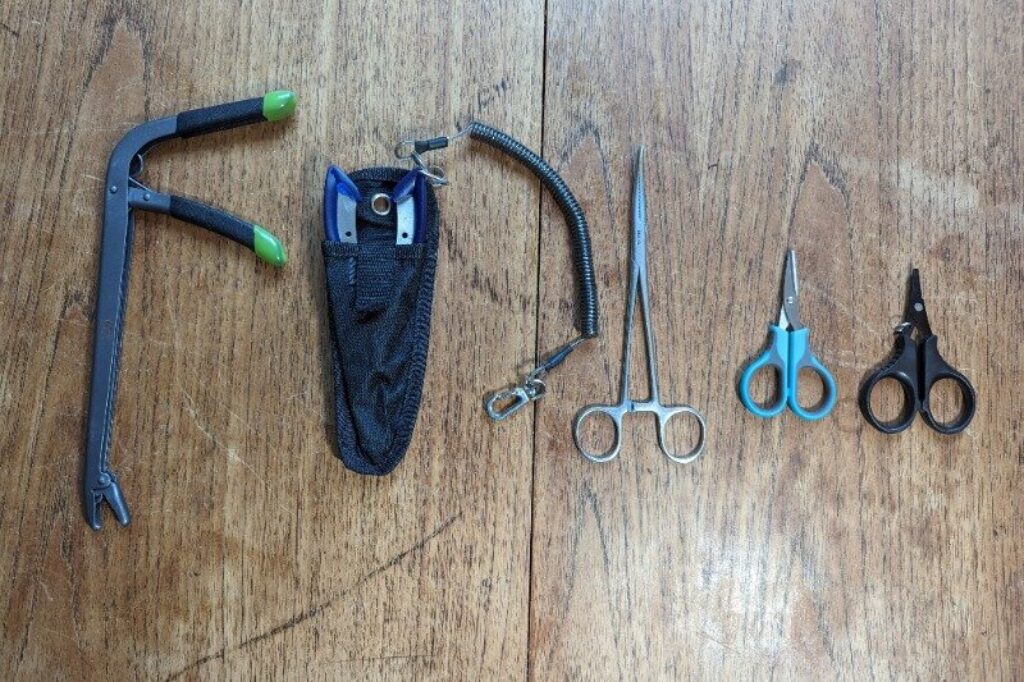
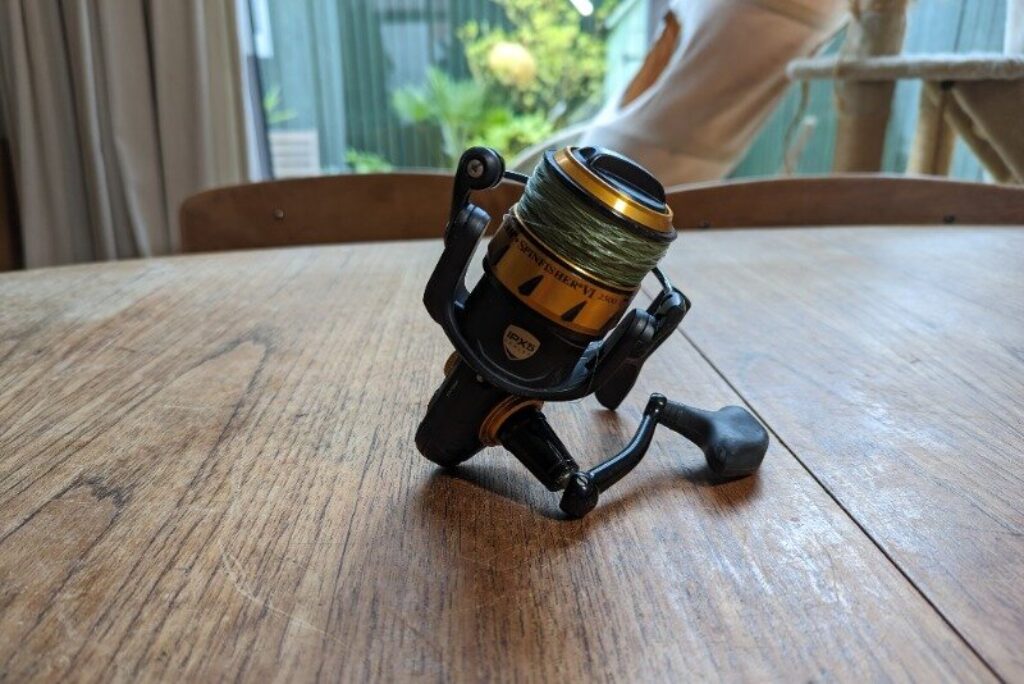
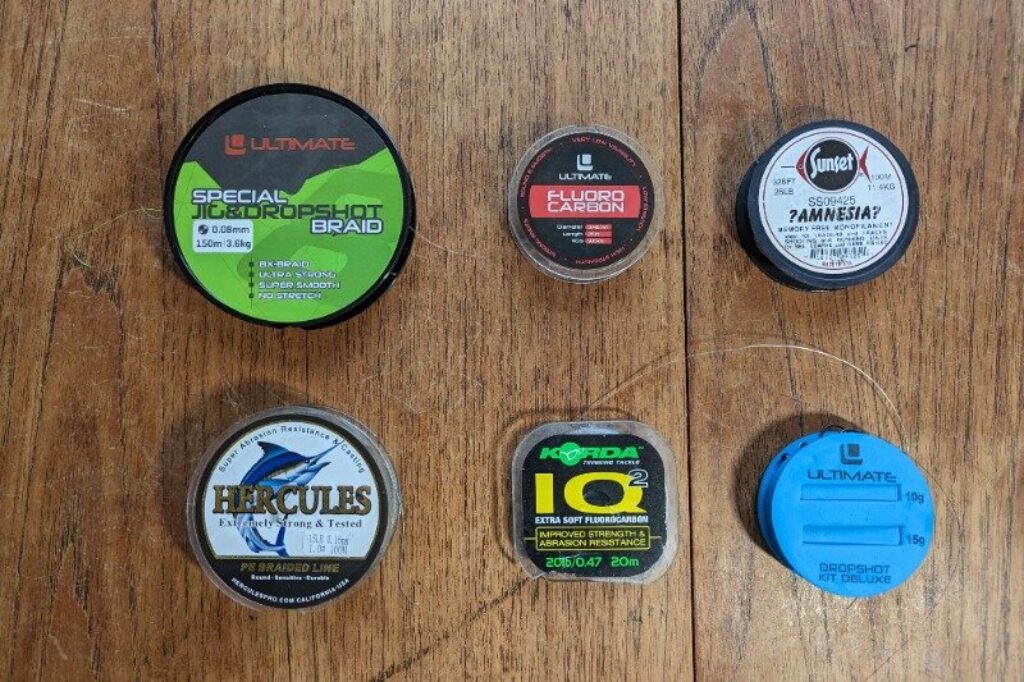
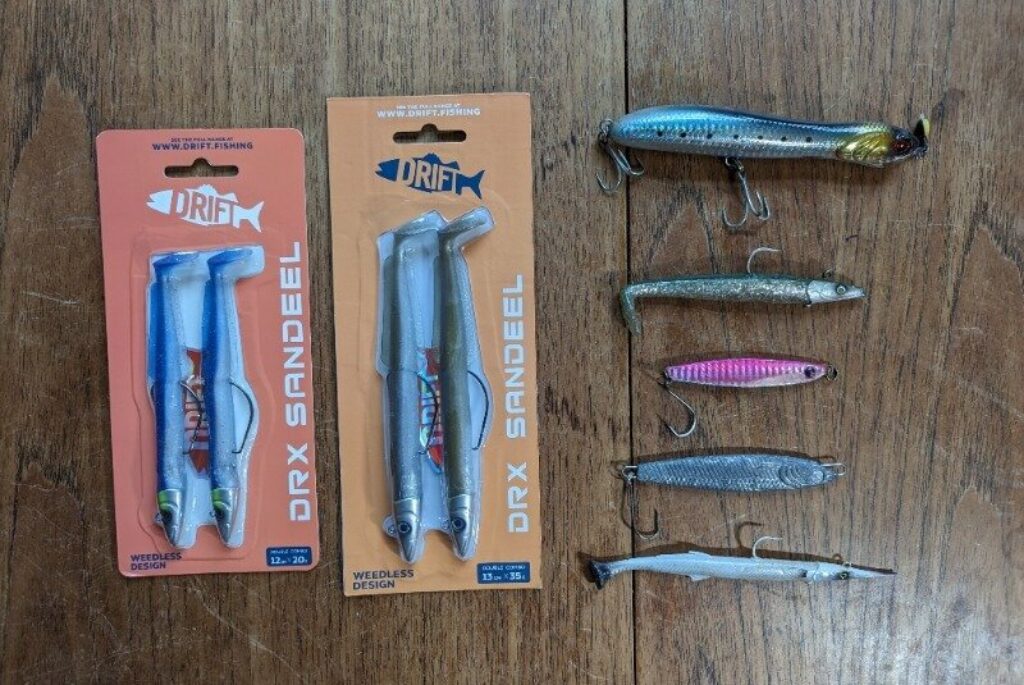
If you’re fishing from the shore for bass, a 9’6″ rod with a 10 – 35g casting weight, good flexion in the middle section and a reasonably sensitive tip is perfect for bass fishing. So if you have something of this ilk you’re good to go.
The best reels for saltwater lure fishing have an ultra-smooth action, are damage resistant (saltwater does damage lures and can ruin their action if you don’t rinse them after use) and can carry enough line. Penn Spinfishers or Slammers are personal favourites.
Braided line with a breaking strain of anywhere from 20 – 30lb is perfect for bass fishing. Avoid brighter colours and opt for variations closer to the colour of the water where you’re fishing. Be as inauspicious as possible.
Fluorocarbon is the best leader material to use. Opting for leader strength that is roughly as strong as your braid is sensible. I usually opt for a slightly weaker leader than braid (by 5% or so) so that any breakages don’t snap the hole rig. Although this is only pertinent if you’re fishing with a swivel/clip combo.
Mono was once seen as the best option but it does glint in the light which makes lots of us think it spooks the fish. Whereas fluorocarbon is subtle and highly abrasion resistant.
You want to carry at least a couple of types of lures – with spares – for any trip you go on. Bass fishing can be a snaggy, frustrating process and you’re certain to lose stock on each trip.
But as the fish could be feeding on the surface, below the surface and on the bottom it’s important you can cater to these depths. And if the water is murky, brighter coloured lures may put you in better stead. Whereas if the water is clear, natural colours tend to be a better option.
An unhooking tool is essential just in case the bass has swallowed the lure. Using single barbless hooks will lose you more fish, but will minimise damage and ensure the lures slide out more easily. A lure box and lure bag are crucial too. Typically a set of fishing pliers (that can act as a crimping tool for hooks) with a line cutter you can attach to your person is perfect.
How do you set up a bass lure?
The setup when lure fishing for bass needs to be tough to break and present the lure naturally. The beautiful thing about lure fishing is the relative ease of the setup, in which you will need to:
- Tie your braid to your leader with an FG knot – this knot type isn’t essential, but it is the best around. We use Briggsy’s version:
- Tie your leader to a lure clip – the uni-knot is a personal favourite
- Then clip your lure on and voila, you’re good to go
Lure fishing for bass from the shore
Lure fishing for bass from the shore is a stunning way to hunt the hunters. But don’t start by looking for the bass. Look for the areas where their food is or is likely to be. If you have time, visit the beach at low tide and scout the area so you can find the marks where peeler crabs, squid and baitfish are likely to hide.
Once you have found a mark and have a reasonable understanding of it, try different lures – in colour, size and depth – and retrieval methods until you hit the sweet spot. Fish the shore in the lead-up to the high and low tide(s) and the subsequent ebb and flood. Around two hours on either side is a good starting point.
The 12 Best Sea Fishing Spots in Devon
Lure fishing for bass from a boat
Whilst bass are highly aggressive predators, they’re also easily spooked. Particularly by anything that looks out of the ordinary – shadows or large boats for example. So a smaller boat not only allows you to fish in the shallows but is also less likely to spook the bass. Perfect for lure fishing nearer the shore.
If you’re fishing offshore then you need to locate a structure where the bass’ prey is likely to be present. Reefs that at lower tide are close-ish to the surface are prime spots that you can find by scouring the surface for rough water or – if you’re lucky enough to have a fish finder – by using a fish finder. Obviously.
Of course, you can also try trolling, but that’s always been a less enjoyable method for fishing in my opinion.
FAQs
Can you catch bass on lures in the UK?
Yes, you can catch bass on lures in the UK. In our opinion, catching bass on lures is the best way to fish for bass. Not only is it an incredibly effective method of catching these aggressive predators, but it helps you cover a lot of ground from the shore in spectacular locations.
Are lures better than bait for bass fishing?
Lures are not necessarily better than bait for bass fishing, just different.
If you’re fishing in murky or still water, bait is likely a more effective method than lure fishing. Lures can be tricky to pick up in ultra-murky conditions and seem unnatural in particularly clear conditions. Particularly as bass are less likely to hunt in unfavourable conditions.
But if the tide is right, the sea is rough and the bass are hungry, lure fishing is unquestionably the best method of bass fishing for the excitement alone.
Tags: BassSea Fishing
Hi, I'm Harry. A keen, albeit exceedingly average fisherman. I've spent the last few years trawling London's waterways with - if I'm being kind - varied success and would love to help you avoid the mistakes I have made.
